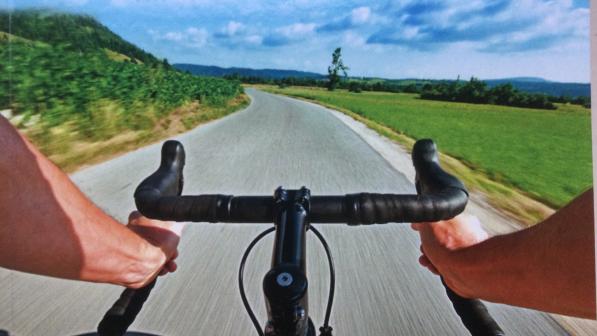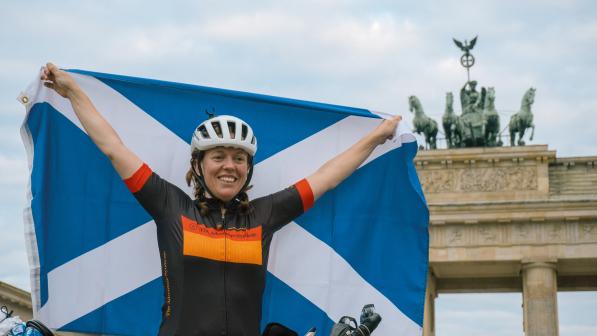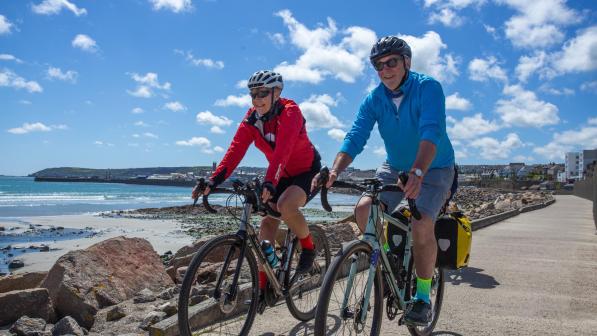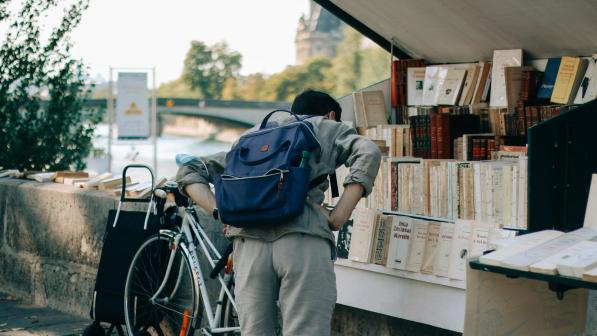Brian Long and Philippe Claverol: Peugeot: Classic Bicycles 1945 to 1985

Chapter 4: The sizzling seventies
By the time the seventies arrived, even though sales were booming again, many of the famous bicycle makers had fallen by the wayside, or were absorbed by stronger competition. Thankfully, Peugeot was in the latter group, with its successful Peugeot-BP-Michelin racing team keeping the marque firmly in the spotlight …
It was a strange situation, with some truly staggering numbers involved. If we take the US market as an example, 7,000,000 bicycles were sold in 1970, although the vast majority were kids’ bikes, and only 200,000 were road-racers. It was therefore a difficult environment for those in the industry that specialised in sporting models. Indeed, few were able to weather the storm, and rivals were dwindling on an annual basis.
Had the failed manufacturers managed to hold on, by 1972, they could have fought for a share of the 14,000,000 sales recorded in the US, with sports bikes accounting for over half these. It was a remarkable turnaround, reflected in the launch of new models, and a sudden surge of fresh catalogues in which to punt them.
Back to the start of the decade, though, and there simply wasn’t the justification to keep changing model lines and graphics to attract buyers. In the sporting category, especially, it was good, solid products offered at sensible prices that kept enthusiastic customers lining up at the dealers, rather than edgy paintwork colours and tacky decals.
As such, the same range was rolled out for home market buyers in 1970, including the H50, PL50 and PX50 randonneurs, the H8, PL8, PX8 and PX8L sports bikes, and the P10, PA10 and PX10 competition models. As before, the H8 and H50 were listed as part of the cheaper Hélium line-up.
In racing, Winfried Bölke had gone to a German team, but there were still a few hard hitters in the 23-man Peugeot equipe, and Bernard Thévenet was an important new signing. Jurgen Tschan had a convincing win on the Paris-Tours one-day event, and Raymond Delisle won the Puy de Dome and the Trophée d’Europe de la Montagne, beating none other than Eddy Merckx in the latter, so that has to go down in the history books as something special, too.

Delisle was also Peugeot’s top finisher in the 1970 Tour de France, in which the men in white claimed three stage victories. Ferdinand Bracke took the silverware in the Grand Prix de Wallonie revival, and Roger Pingeon was second in the Critérium du Dauphiné Libéré.
Although the range was carried over yet again for 1971, and the catalogues from this era are far from helpful, lacking dates and showing either old and/or awkwardly angled photography (or drawings that look nice but weren’t updated), a little research throws up a few changes that may help with dating bikes.
The main change was the head badge, which was similar to its predecessor but now based on a scutum-shaped shield rather than a heater-type one; this latest design was naturally repeated on the seat tube. In addition, the ‘Peugeot’ script on the down tube was now enclosed in a block with parallel lines running off each side, although some models (such as the Hélium-badged bikes and the P10, PA10 and PX10) had shorter lines than those found on other bikes.
The Hélium models also had new seat tube decals, bringing them closer to their Peugeot counterparts, but still without chequers in the design. Otherwise, the graphics were much the same as before across the board.
In competition, Jurgen Tschan was crowned the 1971 champion of Germany, and Jean-Pierre Danguillaume won the Grand Prix Ouest France in Plouay. In the Grand Tours, Bernard Thévenet had managed to win a stage of the Tour de France in the previous year, and did the same in 1971, along with Jean-Pierre Danguillaume, and new signing, Walter Godefroot (the green jersey winner in 1970, when the Belgian ace was with the Salvarani outfit).
Thévenet ultimately finished the TdF in fourth, just under 15 minutes behind Merckx, with two more Peugeot riders in the top 20. While there was nothing to write home about in the Giro d’Italia, Ferdinand Bracke won the 1971 Vuelta a España after a calculated race, while another Peugeot rider, Wilfried David was second; Luis Ocaña, who’d won for the Bic team in the 1970 edition and would later go on to win the Tour de France, had to be content with third.
With the Beaulieu factory now covering 1.7-million square feet (155,000m2) and employing around 1,600 solely for the manufacturing of bicycles, plus a further 600 at Saint-Louis, annual production hovered around the 700,000 mark in the early seventies, and continued to rise on the back of a new boom.

This sudden jump in volume created a few quality issues for a time, but they were duly brought under control, and a new ‘Atelier Prestige’ workshop was added at the main Beaulieu site for high-end and custom-made bikes in 1974, headed by the experienced Raoul Jeand’Heur and manned by just eight craftsmen.
Interestingly, Raleigh opened its Specialist Bicycle Development Unit (SBDU) in 1974 as well, showing how upmarket sections of the industry had become, keeping it going until 1986. Another factory had been secured at Romilly-sur-Seine, to the east of Paris, too. Bought in 1972, it continued the work of the company’s France Motor Cycles subsidiary (or FMC) by making light motorcycles as well as bicycles for the Cycles Peugeot group.
As it happens, 1972 was to witness the first major overhaul of the Peugeot range in years, with the ‘Nouveau Style’ models leading the way. These were closely related to the smaller-wheeled ‘Week-End’ runabouts (by now offered in DA two-piece, PA folding and RA rigid guise), and were listed in both rigid (NS) and folding (PNS) lines, initially with two grades in each.
There’s actually quite a following for these ‘Nouveau Style’ bikes nowadays, with a number of dedicated clubs across the world.
The kids’ range was also heavily revised at this time, while the ladies had less choice than before, with the PX45 being a victim of the cull, for instance; the PX8 variant was also reduced to a single grade in the French catalogues – a PX8L, although without another option, it was entered simply as the PX8 at this time.
Saying that, the H8 was now offered in four- and eight-speed trim like the PL50 and PL8, which was a lot more avant garde than the three-speed specification of yore.





